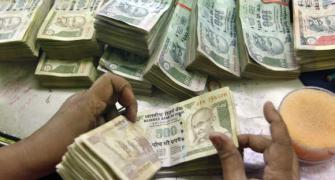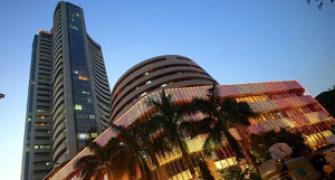 Three key macroeconomic numbers were released last week.
Three key macroeconomic numbers were released last week.
The Index of Industrial Production (IIP) figure was released for June and the Wholesale Price Index (WPI) and Consumer Price Index (CPI) numbers were released for July.
Taken together with the corporate results for Q1 2014-15 (April-June 2014), these should provide a broad overall picture of economic direction.
Overall, the picture is somewhat reassuring. The economy seems to be pulling itself out of a two-year period of stagnation.
However, this is unlikely to be a "V-shaped" recovery with a sharp rebound.
It seems we'll see gradual improvement quarter-by-quarter.
The point-to-point growth rate for IIP was 3.4 per cent for June 2014 compared to June 2013.
This was lower than expectations and lower than the rate of change in May 2014, which amounted to 4.7 per cent.
However, June did show positive growth for a third consecutive month, which is a good sign.
The overall quarterly IIP growth rate for April-June 2014 was about 3.9 per cent. "Deseasonalising" for election-related activity would be crude and somewhat hit-and-miss.
But it is likely that campaign spending resulted in some positive activity through this period.
For example, manufacturing grew by only 1.8 per cent while electricity grew by 15 per cent and transport by 7.5 per cent.
This pattern of high transport and power-related changes coupled to marginal changes in manufacturing would gel with a boost from election spending and this is not necessarily a bad thing or even a one-off boost to the economy.
If this burst of spending changes sentiment and the momentum is maintained, it could enable a full-scale recovery.
The fact that three broad sectors -- transport, basic metals and non-metallic mineral products -- showed significant gains does imply that a broad recovery is in its initial stages.
The inflation numbers showed an unsurprising pattern. Consumer price inflation rose to 7.96 per cent year-on-year in July 2014 versus July 2013.
This was driven by surging prices of vegetables, fruit and milk, and was a little higher than consensus expectations.
Vegetable prices increased by over 35 per cent in July over June 2014.
This drove the uptick in CPI, since food has 48 per cent weight in the index. Prior experience also shows that higher food inflation usually translated to higher core numbers (the price of non-food and non-fuel items) with a lag of about 6-8 weeks, so that effect could also be around the corner.
At CPI level, core inflation (excluding food and energy) remained above 7 per cent, still above the RBI's stated comfort levels.
When it comes to the WPI, the year-on-year rate of increase has fallen to 5.2 per cent, the lowest rate of change since February 2014. Manufactured goods inflation was just over 3 per cent.
The rate of inflation in fuel and power is at its lowest in six months but still running above 7 per cent.
Corporate earnings in Q1 showed acceleration but the segmental results showed that this was still sector-specific.
In a study done by Business Standard rose 35.3 per cent on a year-on-year basis to Rs 99,527 crore (Rs 995.27 billion) in Q1 2014-15.
This was the fastest growth in three years. It was driven by information technology (IT) services exporters, pharmaceutical companies, fast-moving consumer goods and some auto majors.
There was a low base effect: the same set of companies reported a decline of about 10 per cent in net profit in April-June 2013.
But the same set of companies reported year-on-year growth of 26.6 per cent in earnings in the January-March 2014 quarter.
So there were major contributions from two key export sectors - that's no surprise since the rupee lost ground overall.
Other than this, consumption demand may have been revived to some extent - anecdotal evidence that the semi-urban segment is doing well.
Given these numbers, chances are high that the RBI will not cut rates before January 2015.
However, inflation has not swung out of control and the central bank would be pleasantly surprised at the moderate rate of inflation, given a weak monsoon and turmoil in West Asia.
Indications are that the economy will see gradual growth acceleration through Q2 and Q3 if interest rates continue to remain stable.
At some stage, cyclicals will move into a higher gear but right now, the story is still about the perennials of IT, pharma, FMCG.










